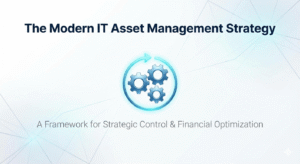What separates an MSP from a single IT person? Apparently, way more than we can include in one blog.
Last week, we discussed the disadvantage facing businesses that leave their IT performance up to one unassisted IT guy. Technical resolutions take longer to complete and quality is far more erratic. Overall, service is unpredictable. And that’s just because of the capability of one person versus a dedicated team.
If you look at an MSP documentation process versus a single IT guy’s, there are stark differences that shape the way IT issues are resolved. Repeatable IT processes are the roadmap to client satisfaction. Think of it as being like the scientific method: a regular, regimented approach quickly resolves issues by covering more ground. Let’s examine two processes that, when done well, really set an MSP apart.
Professional Service Automation
Your business needs a cohesive system to manage projects efficiently. Why not expect the same organizational structure for your IT systems? Professional service automation (PSA) software empowers an MSP to support clients and internal business properly. The best PSA software will cover a variety of different functions all in one: storing configurations, support tickets, client instructions, system/network layout drawings, proposals, billing, marketing, and more.
Properly used, this tool is the nervous system of an MSP, connecting the entire team and facilitating consistent success in their jobs. For example, when an engineer gets a support request, he or she can quickly determine a variety of conditions through the PSA software:
- Has the issue happened before?
- Is there an easy way to duplicate resolution?
- What service level does the client have (a.k.a. how fast will the average fix be)?
- Are staff members available to dispatch immediately?
That’s just part of the service smorgasbord. The PSA also allows an MSP to prioritize tasks on a continual basis, confirming that no process is forgotten. The best PSA software has mobile accessibility, so if a single IT guy or even another MSP falls short in that criteria, find an alternative provider that can quickly access the information they need to work in the field.
Though some claim the data stored in Excel or their homegrown database is sufficient, those options are rarely as complete or rigorously updated as a premier piece of PSA software.
Quarterly Business Review
How often is your single IT guy assessing your service? Since most are occupied with other clients or the technical fires they need to extinguish, there’s rarely time to inspect and address areas of improvement. That’s where another critical client process, the quarterly business review (QBR), is indispensable.
Your IT systems themselves need a regular checkup. So does the level of service you have in place. The advantage of a QBR to both the MSP and its clients is that it allows them to discuss various items that can’t afford to be overlooked:
- The client’s satisfaction levels with current support
- New areas of technology that can benefit the client
- Strategic planning around growth, new markets, etc.
- Budgetary allocation to meet evolving needs
The QBR is completely for the clients benefit. You can voice concerns, strategize, and decide which measures will keep your IT systems running safely and efficiently going forward. When done correctly, they fulfill the MSP promise of partnering with the client to actually improve them and not simply have the MSP be a technical janitor.
Good IT systems never remain static for long. With evolving security standards and unique cost-cutting opportunities, a regular QBR is something you should ask of every IT provider.
If you want to learn more about how the following processes can improve your IT service, feel free to contact us at KME Systems. We value Great Outcomes out of every partnership and use every tool at our disposal to make that possible.
lone-guy-cant-touch-msps-documentation-processes





